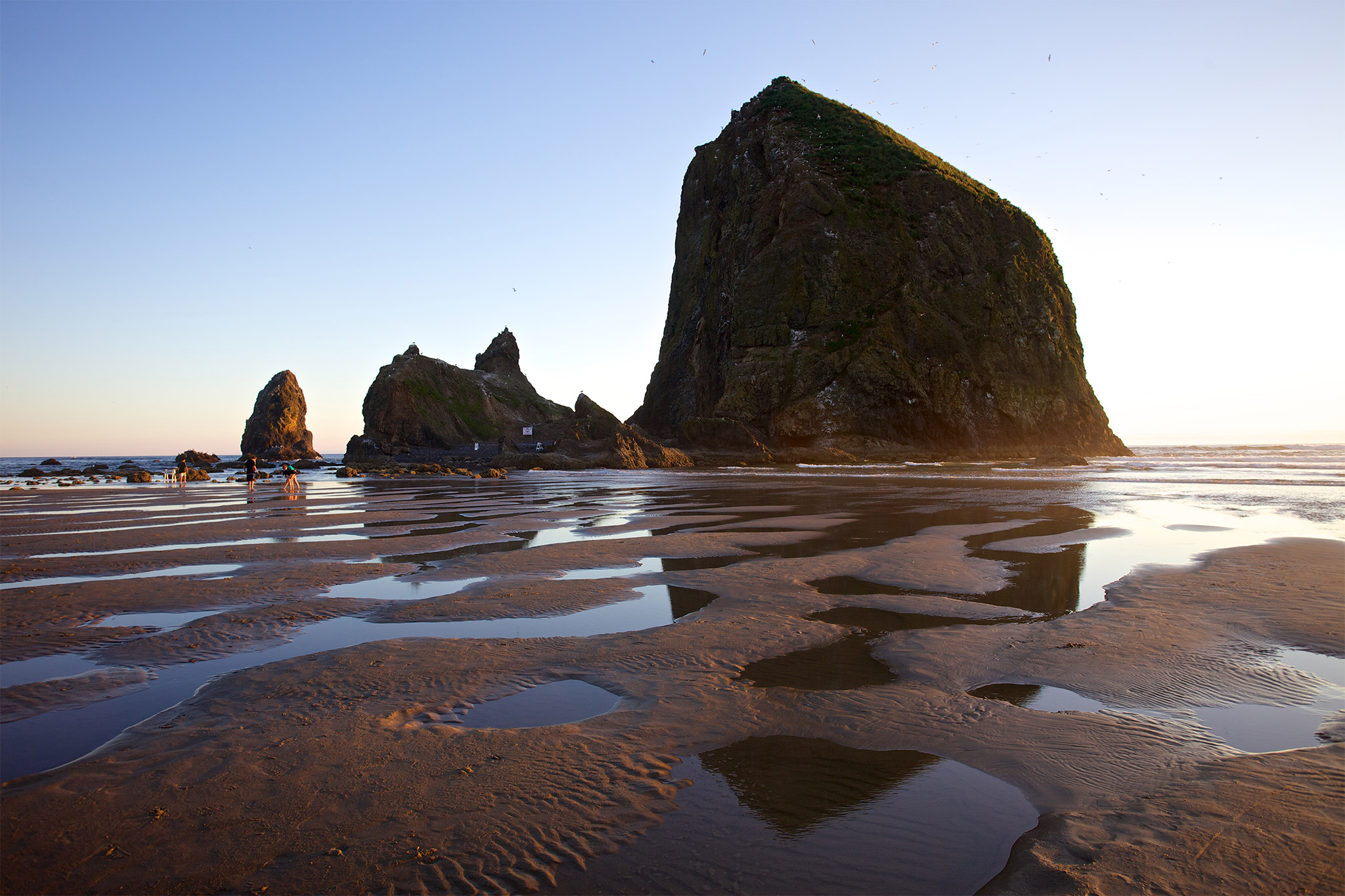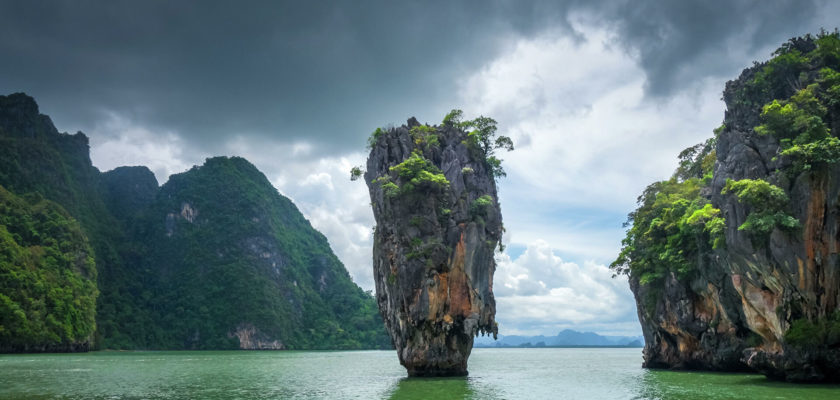Sea stacks are amazing vertical rock formations standing in the sea that were formed entirely by wind and water. The formation process usually begins when the sea creates cracks in the headland, causing them to later collapse, and forming free-standing stacks. Eventually, the same process that created the sea stacks will also cause them to collapse.
Bako Sea Stack
The Bako National Park is located in Sarawak, a state of eastern Malaysia, on the island of Borneo. Millions of years of erosion of the sandstone have created a coastline of steep cliffs, spectacular sea cliffs and stretches of sandy bays. The most well-known landmark of Bako National Park is the sea stack in front of the beautiful beach of Pandan Kecil, that resembles a cobra head coming out of the water. The park is also home to the highly endangered proboscis monkey known for their big noses.
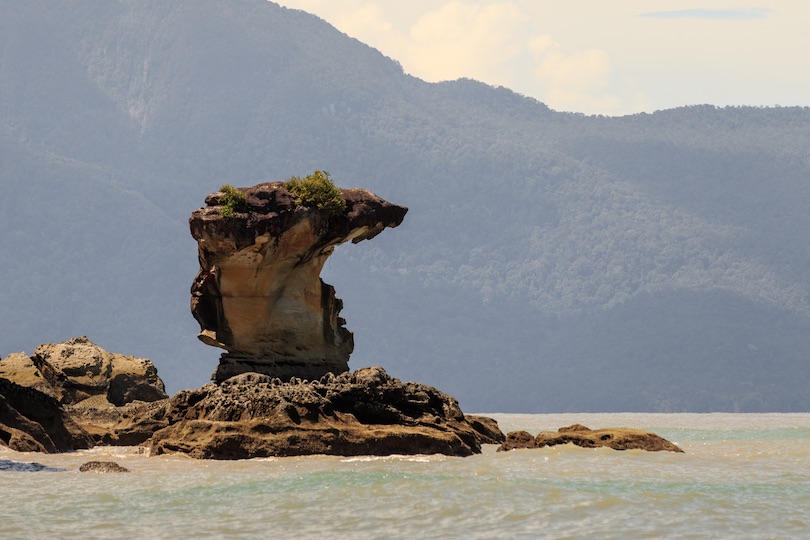
Lange Anna
The Lange Anna is a famous landmark of the small German island Heligoland, located in the north sea. The island used to be much larger but the waves slowly removed most of the rocks above sea level.
The waves created beautiful formations such as caves and narrow peninsulas with arches at the bottom. When such an arch collapsed a sea stack remained. The 47 meter (154 feet) high is the result of the collapse of a natural arch in 1868. In the spring the rock is covered by sea birds who come to the rock to breed.

The Twelve Apostles
The Twelve Apostles are large limestone stacks which were formed as a result of erosion by rain, winds and wild seas. They are located along the spectacular Great Ocean Road in Victoria, Australia. Despite their biblical name there are only eight apostles in the twelve apostles formation. Most recently a 50 meter (164 feet) tall apostle collapsed in 2005. Little Penguins can be found nesting in the caves below the Twelve Apostles.
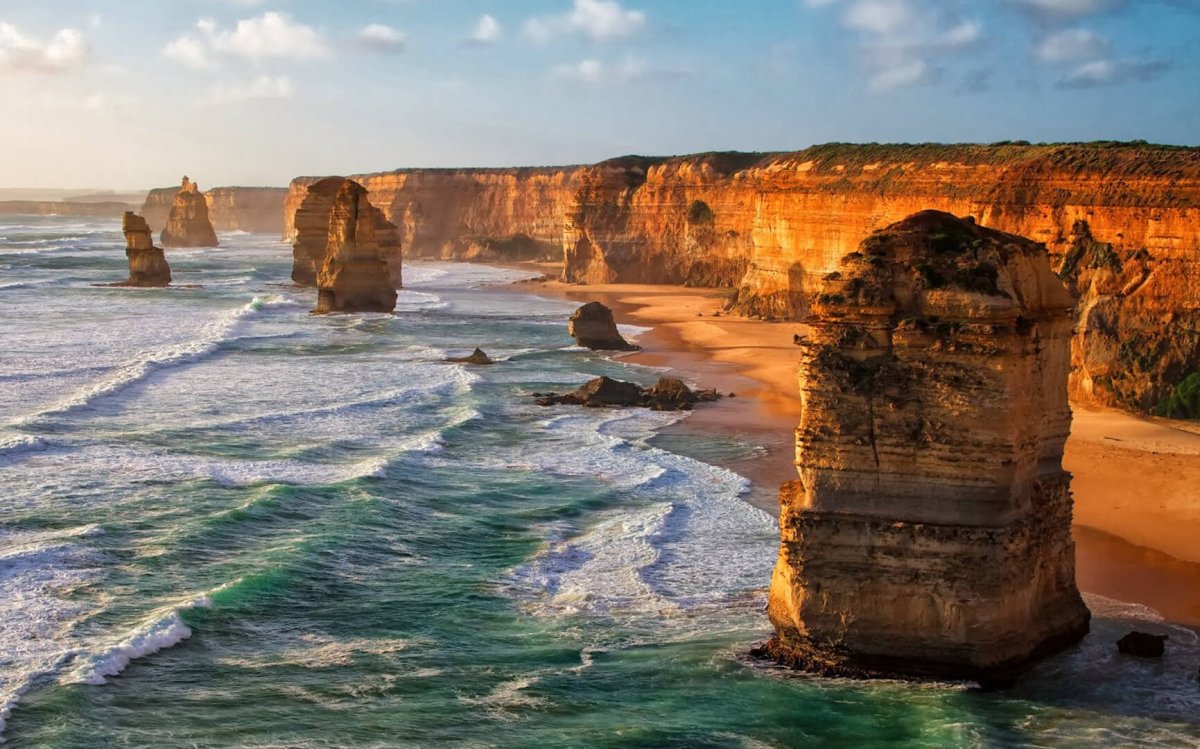
Risin og Kellingin
Risin og Kellingin are two sea stacks just off the northern coast of the island of Eysturoy in the Faroe Islands. The name Risin og Kellingin means The Giant and the Witch and refers to an old legend about their origins. The giant is the 71 meter (233 foot) tall stack further from the coast, and the witch (Kellingin) is the 68 meter (223 foot) tall stack nearest to the land. Gologists predict that Kellingin, which currently stands on two legs, will fall into the sea sometime in the next few decades during the winter storms.
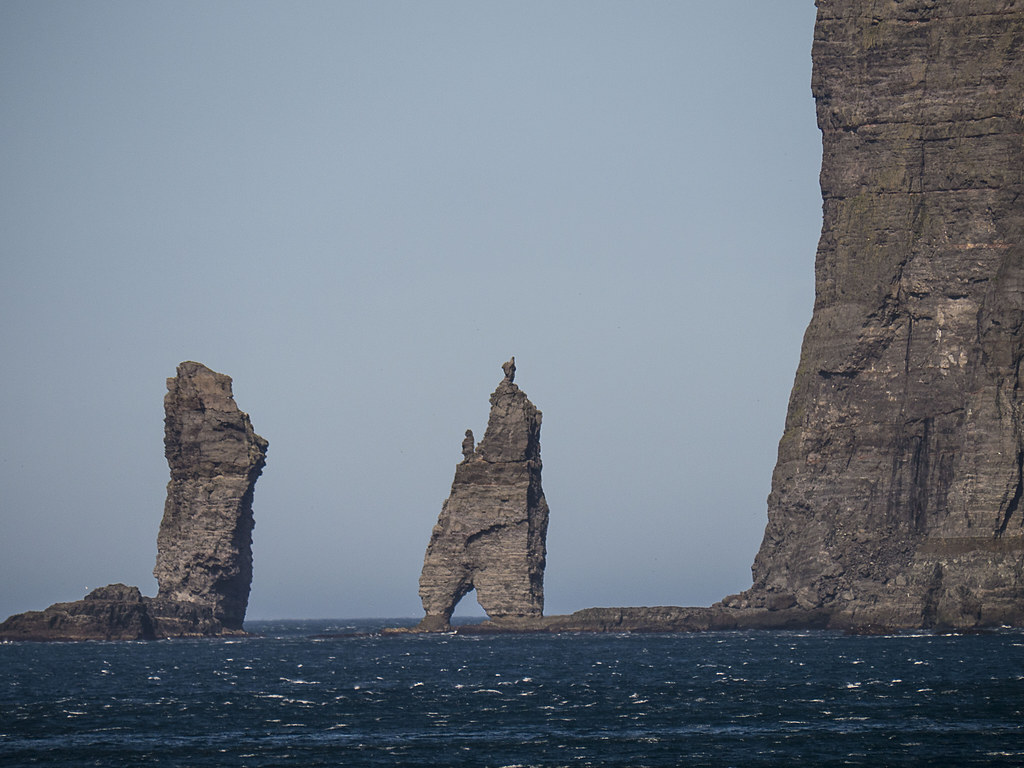
Old Man of Hoy
The Old Man of Hoy is a 137 meters (449 feet) high sea stack of red sandstone on the west coast of the island of Hoy, in the Orkney Islands, Scotland. On maps drawn between 1600 and 1750 the area appears as a headland with no sea stacks so the Old Man is probably less than 400 years old. It may not get much older, as there are indications that it may soon collapse. The sea stack is a popular rock climbing destination and was first climbed in 1966.
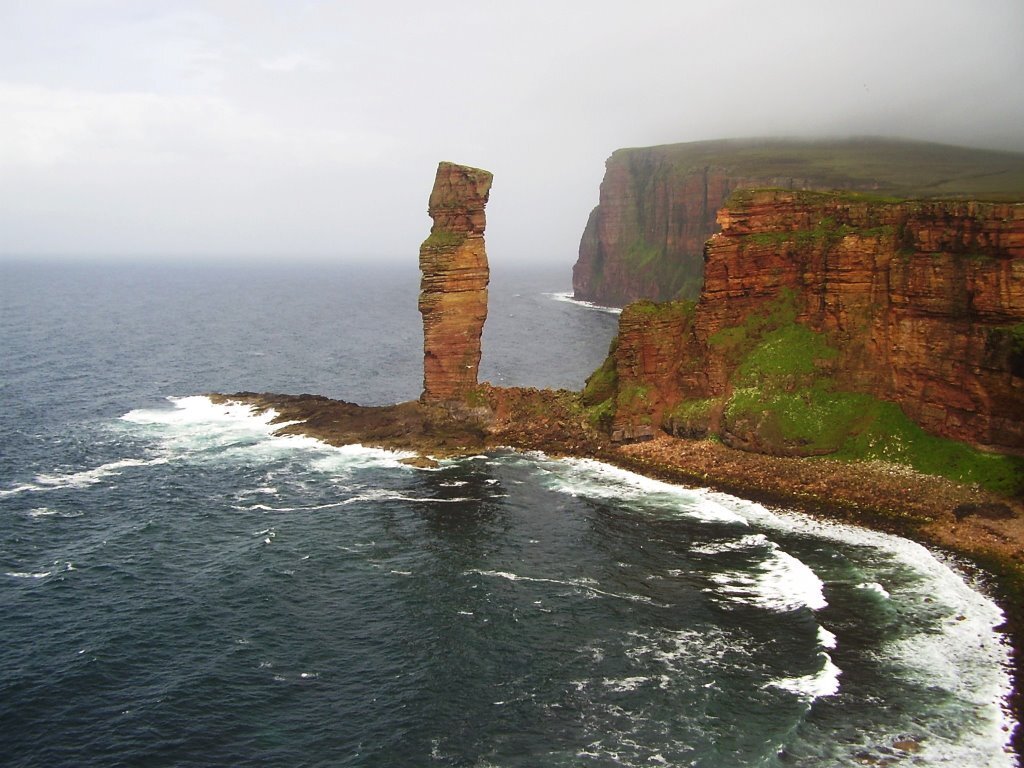
Ko Tapu
Ko Tapu (Nail Island) is a 20 meter (66 foot) tall sea stack located in the Phang Nga Bay, Thailand. Ko Tapu has become a popular tourist attraction since it was featured in the James Bond movie The Man with the Golden Gun in 1974. For this reason, it is also often referred to as James Bond Island. In 1997, James Bond returned to Phang Nga Bay in the movie Tomorrow Never Dies.
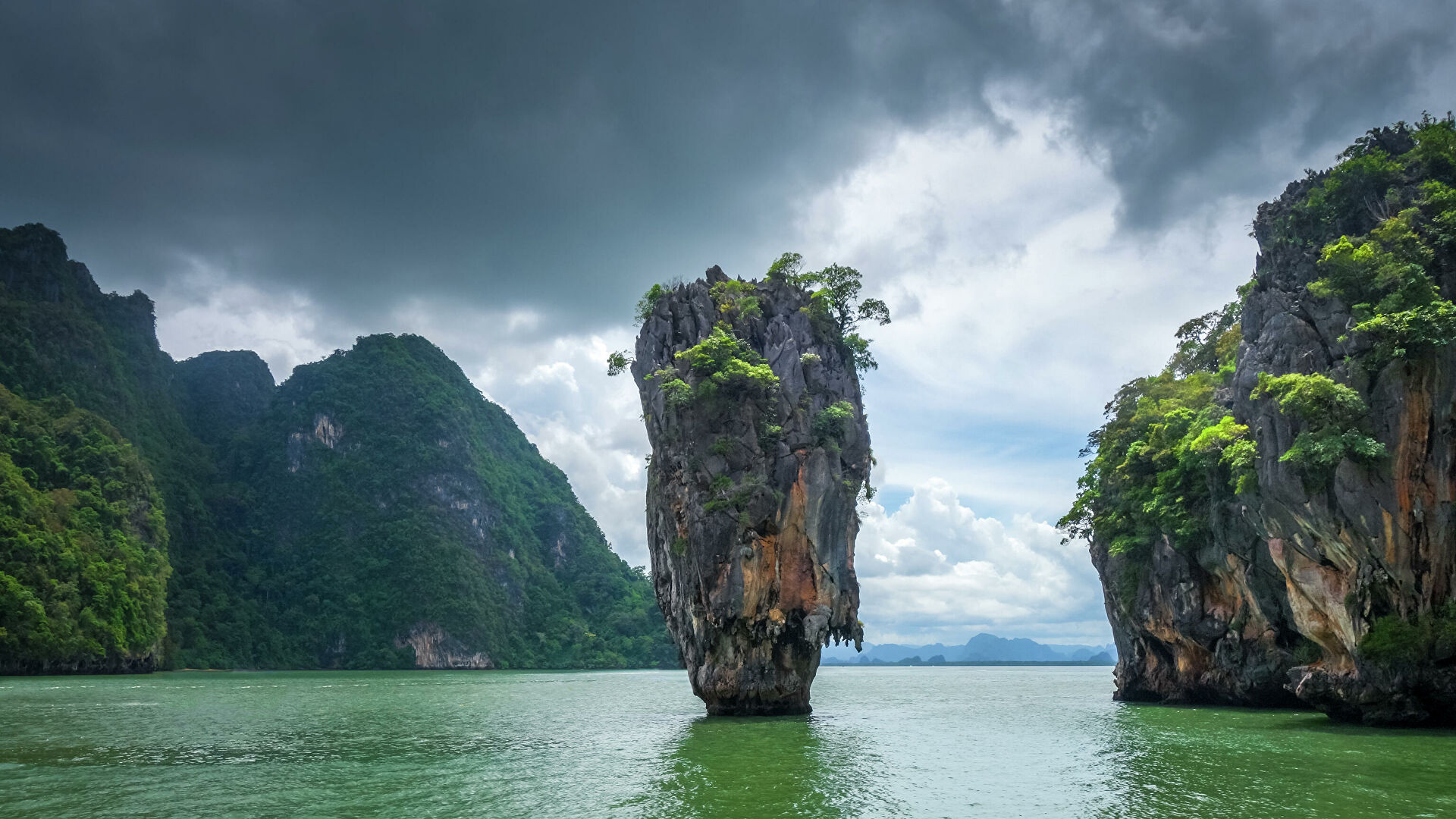
Haystack Rock
Haystack Rock is a 72 meter (235 foot) tall sea stack located on Cannon Beach in the state of Oregon. The rock is home to many birds, including tufted puffins, gulls, and cormorants. It is a popular tourist destination and accessible by foot during low tide. Each year, many people become temporarily trapped on Haystack Rock when high tide engulfs the rock in water.
